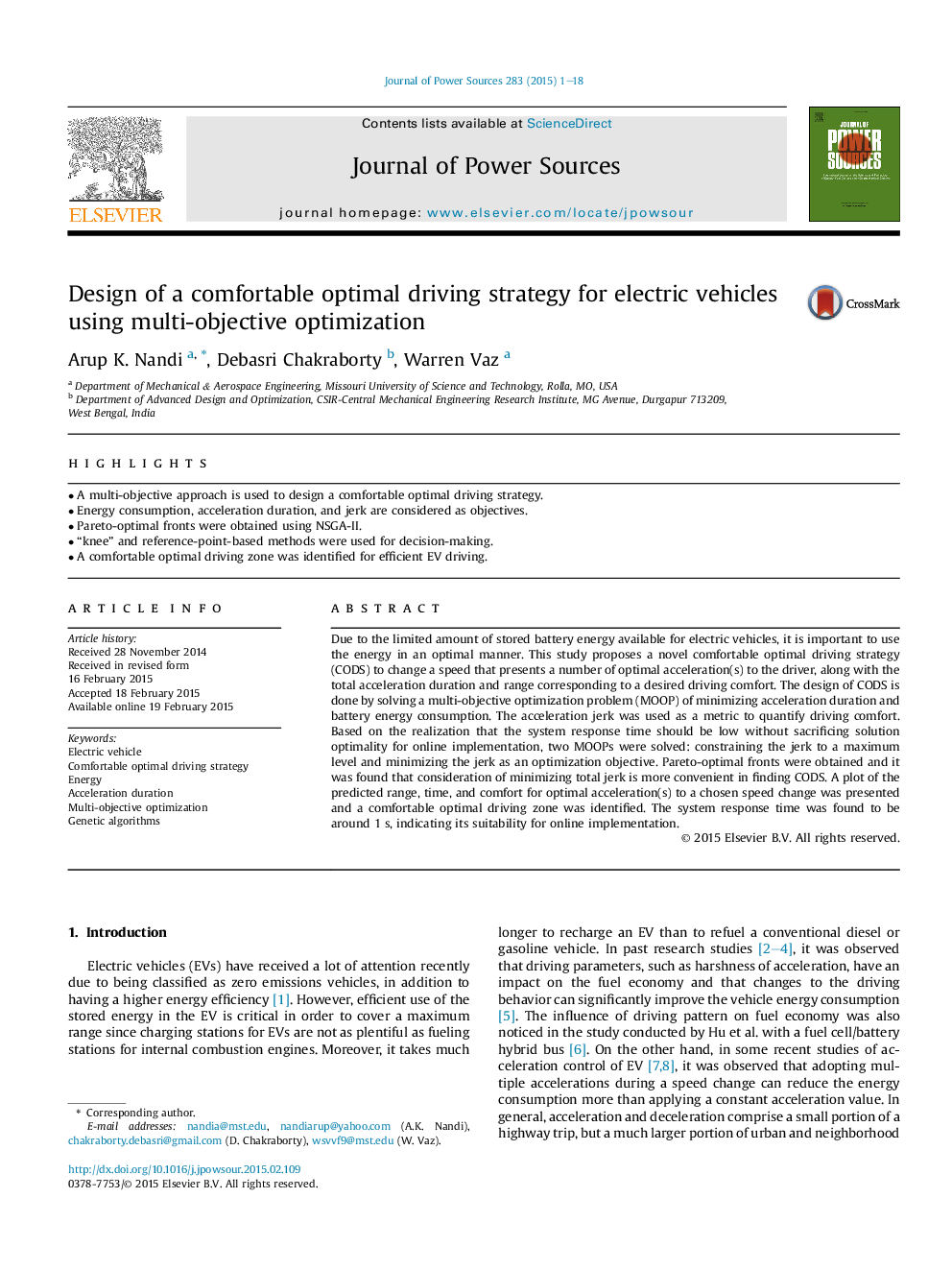| Article ID | Journal | Published Year | Pages | File Type |
|---|---|---|---|---|
| 1292867 | Journal of Power Sources | 2015 | 18 Pages |
•A multi-objective approach is used to design a comfortable optimal driving strategy.•Energy consumption, acceleration duration, and jerk are considered as objectives.•Pareto-optimal fronts were obtained using NSGA-II.•“knee” and reference-point-based methods were used for decision-making.•A comfortable optimal driving zone was identified for efficient EV driving.
Due to the limited amount of stored battery energy available for electric vehicles, it is important to use the energy in an optimal manner. This study proposes a novel comfortable optimal driving strategy (CODS) to change a speed that presents a number of optimal acceleration(s) to the driver, along with the total acceleration duration and range corresponding to a desired driving comfort. The design of CODS is done by solving a multi-objective optimization problem (MOOP) of minimizing acceleration duration and battery energy consumption. The acceleration jerk was used as a metric to quantify driving comfort. Based on the realization that the system response time should be low without sacrificing solution optimality for online implementation, two MOOPs were solved: constraining the jerk to a maximum level and minimizing the jerk as an optimization objective. Pareto-optimal fronts were obtained and it was found that consideration of minimizing total jerk is more convenient in finding CODS. A plot of the predicted range, time, and comfort for optimal acceleration(s) to a chosen speed change was presented and a comfortable optimal driving zone was identified. The system response time was found to be around 1 s, indicating its suitability for online implementation.
